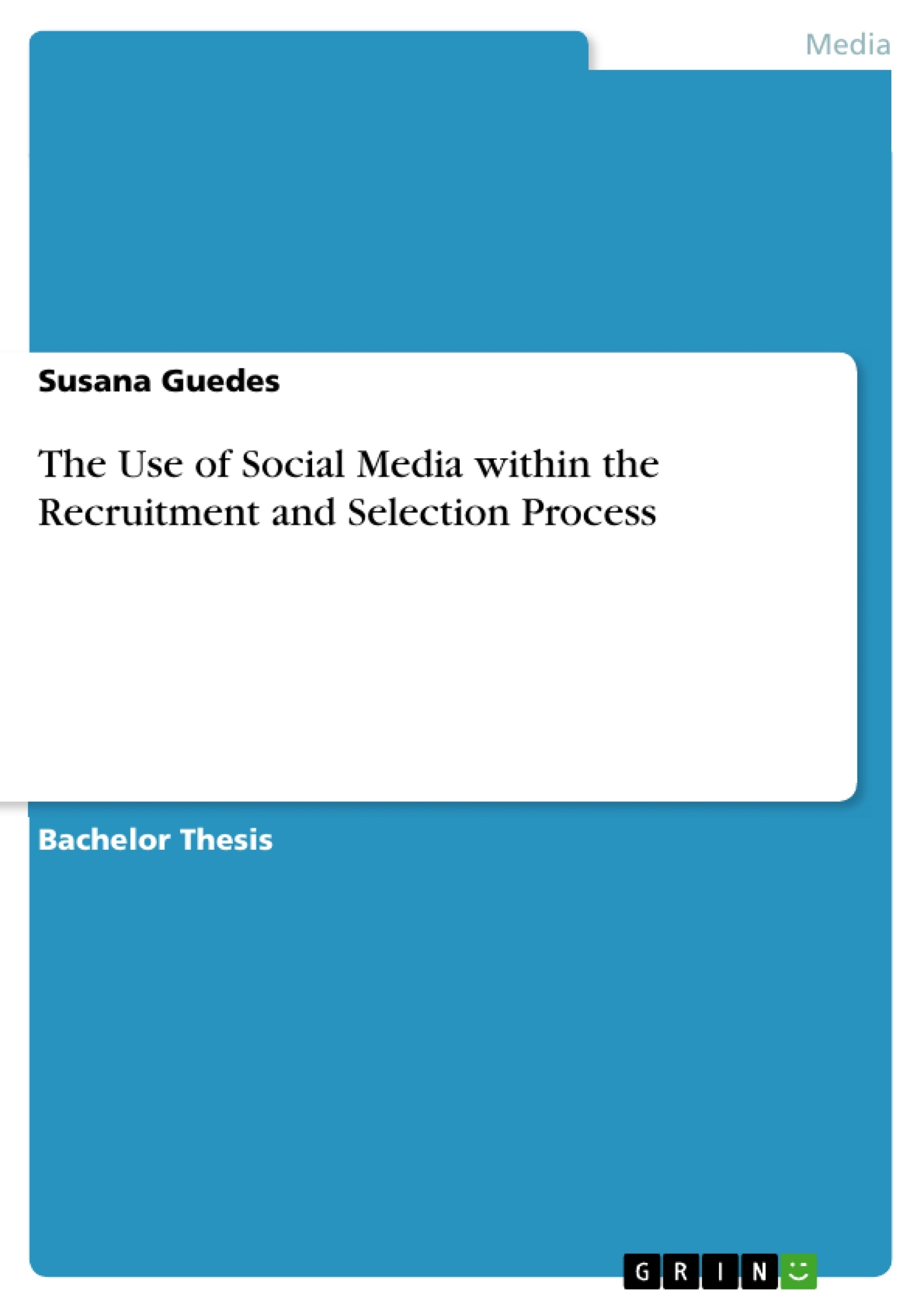
The Use of Social Media within the Recruitment and Selection Process
Bachelorarbeit, 2015
32 Seiten, Note: 2:1
Medien / Kommunikation - Public Relations, Werbung, Marketing, Social Media
Leseprobe
Inhaltsverzeichnis (Table of Contents)
- Chapter 1 - Introduction
- 1.1. Outline of problem being investigated
- 1.2. Research Aims & Objectives
- 1.3. Rationale for Study
- 1.4. The Phenomenon
- Chapter 2 - Literature Review
- Chapter 3 - Methodology & Procedure
- 3.1. Introduction
- 3.2. Research Methods
- 3.3. Demographic Sampling
- 3.4. Advantages & Limitations
- 3.5. Validity & Reliability
- 3.6. Ethical Issues
- Chapter 4 - Research & Findings
- 4.1. Introduction
- 4.2. Quantitative Results & Analysis
- 4.3. Qualitative Results & Analysis
- Chapter 5 - Conclusion
- 5.1. Introduction
- 5.2. Conclusions
- 5.3. Recommendations
- 5.4. Areas of Further Research
Zielsetzung und Themenschwerpunkte (Objectives and Key Themes)
This research aims to investigate the increasing use of social media in the recruitment and selection process. The study explores how social media is utilized by organizations, and the impact it has on both recruiters and applicants. Key themes include:- The growing influence of social media in daily life and its impact on recruitment practices.
- The advantages and disadvantages of using social media for recruitment and selection.
- The role of social media in shaping and presenting professional identities.
- The evolving nature of recruitment practices in the digital age.
- The ethical considerations associated with using social media in the recruitment process.
Zusammenfassung der Kapitel (Chapter Summaries)
- Chapter 1 - Introduction: This chapter introduces the research problem, outlining the increasing use of social media in everyday life and its implications for recruitment and selection. It further defines the research aims and objectives, providing the rationale for the study.
- Chapter 2 - Literature Review: This chapter reviews existing literature on the use of social media in recruitment and selection, examining various perspectives and research findings. It explores the advantages and disadvantages of social media in the recruitment process, as well as its impact on organizational practices and individual candidates.
- Chapter 3 - Methodology & Procedure: This chapter details the research methodology used, including the research methods, demographic sampling, advantages and limitations of the approach, validity and reliability considerations, and ethical issues involved.
- Chapter 4 - Research & Findings: This chapter presents the quantitative and qualitative results of the research, analyzing the data collected through questionnaires and interviews. It examines the findings in relation to the research aims and objectives, providing insights into the use of social media in recruitment and selection.
Schlüsselwörter (Keywords)
This research focuses on the intersection of social media and recruitment practices. Key terms include: social media, recruitment, selection, human resources, online recruiting, professional identity, digital communication, ethical considerations, and strategic communication.Details
- Titel
- The Use of Social Media within the Recruitment and Selection Process
- Hochschule
- London Metropolitan University
- Veranstaltung
- BA Hons Business Management
- Note
- 2:1
- Autor
- Susana Guedes (Autor:in)
- Erscheinungsjahr
- 2015
- Seiten
- 32
- Katalognummer
- V300960
- ISBN (eBook)
- 9783656978237
- ISBN (Buch)
- 9783656978244
- Dateigröße
- 810 KB
- Sprache
- Englisch
- Schlagworte
- social media recruitment selection process
- Produktsicherheit
- GRIN Publishing GmbH
- Preis (Ebook)
- US$ 16,99
- Preis (Book)
- US$ 19,99
- Arbeit zitieren
- Susana Guedes (Autor:in), 2015, The Use of Social Media within the Recruitment and Selection Process, München, Page::Imprint:: GRINVerlagOHG, https://www.diplomarbeiten24.de/document/300960
- Autor werden
- Ihre Optionen
- Vertriebskanäle
- Premium Services
- Autorenprofil
- Textarten und Formate
- Services für Verlage, Hochschulen, Unternehmen

- © GRIN Publishing GmbH.
- Alle Inhalte urheberrechtlich geschützt. Kopieren und verbreiten untersagt.
- info@grin.com
- AGB
- Open Publishing
Der GRIN Verlag hat sich seit 1998 auf die Veröffentlichung akademischer eBooks und Bücher spezialisiert. Der GRIN Verlag steht damit als erstes Unternehmen für User Generated Quality Content. Die Verlagsseiten GRIN.com, Hausarbeiten.de und Diplomarbeiten24 bieten für Hochschullehrer, Absolventen und Studenten die ideale Plattform, wissenschaftliche Texte wie Hausarbeiten, Referate, Bachelorarbeiten, Masterarbeiten, Diplomarbeiten, Dissertationen und wissenschaftliche Aufsätze einem breiten Publikum zu präsentieren.
Kostenfreie Veröffentlichung: Hausarbeit, Bachelorarbeit, Diplomarbeit, Dissertation, Masterarbeit, Interpretation oder Referat jetzt veröffentlichen!
- GRIN Verlag GmbH
-
- Nymphenburger Str. 86
- 80636
- Munich, Deutschland
- +49 89-550559-0
- +49 89-550559-10
- info@grin.com
-









